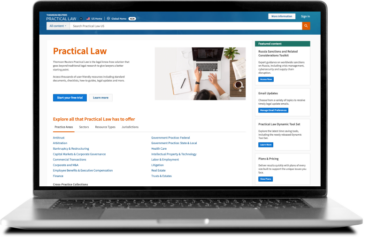As an in-house lawyer, you know that moving up the chain means finding a way to project executive presence. Sadly, there is no class in law school on the topic and you cannot order executive presence from Amazon. The good news is that it is a set of skills that can be learned and honed over time. Below is a road map to help develop the key skills necessary to build your executive presence.
For in-house lawyers, executive presence is some combination of skills involving brain power, personality, communication, and appearance that impact how you make your in-house clients feel after they have spoken with/met you. The right combination allows you to inspire them and cause them to seek out and value your advice and counsel. They feel confident about your ability to help them solve their problem, no matter how complex or scary. Likewise, they will read and consider what you have to say with an open mind and a predisposition toward following your recommendations. When you find yourself in this position, you have likely succeeded in your goal. Here is what you need to do to get there:
Appearance matters a lot when it comes to executive presence.
Try to dress and look the part of a serious in-house lawyer. You do not need to wear a tie every day but leave the T-shirts, miniskirts, and ill-fitting pants at home. While every company is different, you want your in-house clients (and the executive team) to look at you and think – instantaneously – that this is someone we can trust with substantial issues. Watch how the senior leaders of the legal department and the company dress and emulate them.
All successful leaders have mastered the art of communication.
Most importantly, they understand how to read their audience and communicate with them in a manner that is both appropriate for the circumstances and works for them. When writing or speaking, this often means keeping things simple and to the point. The ability to translate lawyer-speak into plain words is critical. Likewise, do not assume your audience knows about legal issues or even cares that much about them. Become a teacher and make the topic interesting and informative. And never talk down to people. Knowledge is power, but do not wield your superior knowledge of something like a club.
People will flock to your banner if they believe you consistently exercise good judgment.
Good judgment, however, almost always depends on the circumstances. You exercise good judgment by having a philosophy around how you make decisions, i.e., you have a process you follow that helps you make good decisions and, thereby, demonstrate good judgment. Here is a mental checklist that I ran through (and still do) when faced with the need to make substantive decisions:
- Don’t make decisions when you’re mad or upset.
- There’s always another side – what’s the other side of the story?
- Don’t make assumptions – learn the facts.
- What information am I missing and where do I get it?
- Who wins and who gets hurt?
- Who else needs to be involved in making this decision?
- What is the company’s risk tolerance and how will this fit in?

Risky Business It’s difficult to be part of any business and not hear about “risk.” How can you align the legal department with the company’s risk tolerance levels?
- Do I need to make this decision immediately or do I have time to think more about it?
- What are the three most likely things to happen after I decide?
- What’s the downside of my decision?
- Am I being consistent?
- What is the “right” thing to do (and why can’t we do that)?
Having a “method” to consider problems and reach decisions, however, will – more often than not – lead to good, decisive decisions, the offspring of good judgment.
It’s difficult to build executive presence without leadership skills.
Some people are natural leaders. But, if that’s not you, don’t worry; everyone can learn to be a leader. Leadership starts with having a vision. Where do you want to go and, more importantly, where do you want to take your team, department, or the company? Leaders are the people who often say, “If I were in charge, I’d do…” and when they get their shot, they do it. And more. Leadership requires that you are proactive and not reactive. And you must be at ease with change. Nothing stays the same for very long, especially in the business world and especially in an in-house legal department. Good leaders delegate well, promote and mentor others, and defer credit – making sure everyone gets good work and the spotlight. They are naturally curious and ask good questions, not because they want to put anyone on the spot, but because they want to learn and understand. They come prepared to meetings and they actively listen, often letting others go first, pulling everyone into the conversations, and ensuring that those in the room feel comfortable speaking the truth without fear of reprisal. Most importantly, good leaders are empathetic to others’ situations, showing humility, grace, and kindness when necessary.
Honing your executive presence means developing your ability to project gravitas.
Gravitas is a certain weightiness and depth of personality, whereby a person commands respect and attention through their presence, actions, and speech. To me, this means a combination of the following:
- Knowledge (subject matter expertise and general)
- Thoughtfulness
- Seriousness
- Confidence (and dignity)
- Integrity
- Credibility
- Teacher
- Playing evenhandedly with good and bad information
Lastly, it’s poise – working well under pressure and being the rock that your colleagues can hold onto when things get bumpy or crazy. Everyone wants that person in the room with them when things get tough.
_________________________________________________________________
There are more of these soft skills you can build upon and you should consider a wide list of them, focusing on the ones you think will help you the most given your particular circumstances. Building executive presence doesn’t happen overnight or over the course of a month or two. It takes effort sustained over a long period of time, along with a willingness to engage in self-reflection and self-improvement. It all starts with the first step.
If you have access to Practical Law, you can find many resources to help you on your journey.











